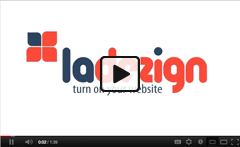How many times have you visited a website, only to give up after a few minutes because the text did not quickly give you the information you were looking for? Or perhaps you left before you even started reading because the text was so long and dense. As with every type of writing, text written for the web has its own style and requirements.
Today, everyone has an elevator pitch, and we all expect experts to boil their messages down to 90-second sound bites. It is not surprising that these same principles of simplicity and conciseness apply when writing for a website. Web writing must have a clear focus, tight organization and a direct writing style.
A clear focus means that you know precisely what message you want to convey, both across your website and on the home page. This is more than saying something like this: "I want people to see that we are a progressive and flexible accounting firm that is fully in sync with the needs and requirements of businesses in the 21st century."
This statement is only the beginning. It requires detail and translation before it is ready to go on a website. For example, what exactly does "flexible" mean for this accounting firm? Probably not that the company is willing to bend the law or "cook books" for a client.
It more likely means the company can respond to companies of different sizes in a variety of industries or that the company provides a broad range of accounting services. It could also imply that the company offers some services that are broader than those commonly found in an accounting firm.
Once there is a clear statement that reflects the focus of the website and the home page, the next question becomes how to organize content so that a website visitor immediately sees what this company has to offer. Menu selections are a major factor in communicating the website message, but text is necessary to tell the story.
The first step in organization is to list the major elements of the story. For example, with the accounting firm mentioned above, the major elements might include industries served, range of services, client case studies or testimonials, resources and track record. These would become the sections on the website. Each would have several pages of information and text.
None of these categories suggests the "progressive" element in the client's business. That would normally be handled in the text of the various pages of the website.
The text of the home page, then, would briefly mention these major elements of the website, with enough detail so visitors can determine if this firm is a good choice for them. The home page would also emphasize the "progressive" aspects of the business.
For example, the home page text might say something like this:
"ABC Accounting works with our many clients to meet the challenges of building their businesses in today's tough economy. We know how the business environment is changing and make sure our clients are prepared to meet the evolving demands of their industries and our national economy.
Our services are anchored in traditional business practices, but we introduce a fresh perspective on your business. We offer you technical expertise that rivals any of the Big Four firms, but we’re small enough to give you the responsiveness and individual attention you need from a valued business partner.
ABC Accounting has provided audit, tax and financial advisory services to large and small privately held companies, public companies, high net worth individuals, and family offices in a variety of industries. We have been particularly successful in supporting small entrepreneurial companies as they establish themselves in today's marketplace."
The themes established on the home page would then be used on the main section pages and the pages within those sections.
Writing copy for this home page would have produced unfocused and vague copy if the person responsible had not clearly defined the message before starting to write. In the next couple of blogs, I'll give you some more
tips for building focus and clarity on your website.

 About Jason Ciment
About Jason Ciment







